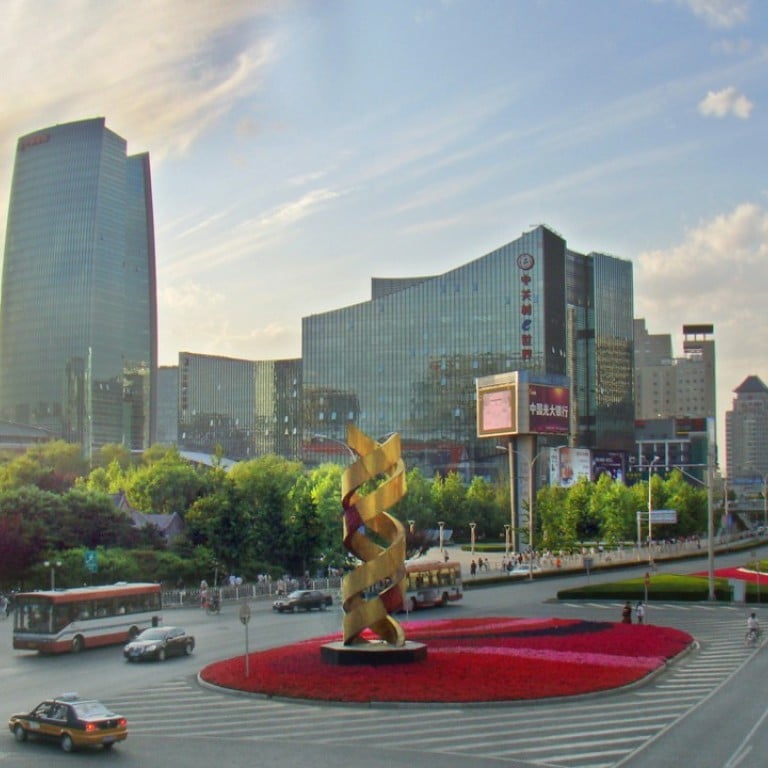
Zhongguancun: Beijing’s innovation hub is at the centre of China’s aim to become a tech powerhouse
- It is home to nearly 9,000 high tech firms, including some of China’s biggest internet firms, such as Nasdaq-listed Baidu and Sina
A combination of talent, money and government support makes Zhongguancun the closest equivalent in China to Silicon Valley.
At the entrance to the Garage Café in Beijing’s Zhongguancun, a slogan reads “you are just one garage away from entrepreneurship, one coffee away from innovation”.
With its name inspired by Steve Jobs’ Apple Garage, the cafe located on the 220-metre-long Zhongguancun Inno Way, a government-backed incubation zone for start-ups, is not designed for everyday coffee chat but more as a place to help ideas meet capital with the aim of finding the next big thing in technology.
“In the good old days, techies could land investment with nothing but ideas. Now investors are getting picky as we enter a capital winter. But Zhongguancun is still the place to be for anyone who wants to set up their own tech business in China,” said Zhang Xiyang, manager of Garage Café.
Founded 30 years ago with a mission to “learn from Silicon Valley and replicate Silicon Valley”, Zhongguancun is at the forefront of Beijing’s drive to turn the country from ‘workshop of the world’ into a global technology powerhouse.
Where to find Zhongguancun?
Located in northwestern Beijing’s Haidian district, Zhongguancun was initially known as a street for consumer electronics sales in 1978 when China’s reform and liberalisation drive kicked off. The ‘cun’ at the end of Zhongguancun literally means “village” in Chinese.
After gaining the blessing of China’s State Council in 1988, Zhongguancun became the country’s first hi-tech industry pilot zone. Since then, the areas has become the launch pad for some of China’s most successful entrepreneurial firms with the backing of Beijing to make it “a national innovation centre with global influence”.
Over the years, Zhongguancun has expanded geographically to become a 488-square-kilometre zone. Its operations and innovation parks have expanded far beyond Haidian district, scattering all over the Chinese capital. To some extent, Zhongguancun is no longer just a physical point on a map and is more of a calling card for China’s rising hi-tech prowess.
How to build Zhongguancun?
Close to some of China’s most prestigious universities and research institutes, Zhongguancun enjoys great advantages in access to talent. The Haidian park of Zhongguancun is home to more than 40 universities, including the world-class Peking and Tsinghua Universities, as well as more than 200 research institutes and national-level laboratories.
Government also lends a hand. Preferential policies, including tax breaks and funding, offered in Zhongguancun by local and central government, helps to make the place a magnet for tech talent and companies. To attract global talent, Beijing’s municipal authorities earlier this year announced plans to offer permanent residence for senior hires and allow them to bring their domestic helpers – if needed – with them to China.
Substantial capital funding for qualified business ideas is also critical for Zhongguancun’s entrepreneurial community. Beijing ranked as the top location for tech-related investments in China in the first half of 2017 by both deal volume and deal value, according to a report by PwC earlier this year. Shanghai, which ranked second, saw a total deal value of US$3.1 billion in the first half of 2017, far behind Beijing’s US$18 billion.
What are the big names in Zhongguancun?
Founded in 1984, Chinese personal computer maker Lenovo Group was among the earliest tech companies to get established in Zhongguancun. With a start-up money of 200,000 yuan (US$28,800), Liu Chuanzhi, founder of Lenovo, became one of China’s first-generation tech entrepreneurs.
They have also become some of China’s most successful businesses with 318 Zhongguancun companies raising a total of 296 billion yuan via initial public offering by the end of 2017.
Apart from listed firms, 30 Zhongguancun companies joined CB Insights’ Global Unicorn Club in 2017.
Didi Chuxing, the Chinese ride-hailing giant that drove Uber Technologies out of the mainland, and short video upstart Kuaishou, are also among the Zhongguancun-born unicorns.
What other areas compete with Zhongguancun in China?
Despite Zhongguancun’s credentials as a leading incubator of tech innovation in China, it does have competition. Shanghai – which is known for its Zhangjiang hi-tech zone – ranks top in a list of global cities with the potential to become a leading technology innovation hub over the next four years, according to a KPMG survey in March.
The report, based on a survey of 767 business executives globally, ranked Beijing fifth and ranked the Greater Bay Area that includes Shenzhen and Hong Kong, 15th.

